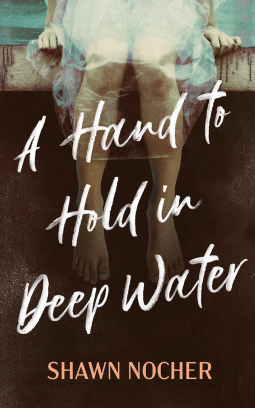3.5 Stars
When her 5-year-old daughter Tasha is diagnosed with a serious illness, Lacey moves back to the farm where she was raised by her stepfather Willy. As she stays by her daughter’s side during her treatments, she starts thinking back to being raised by Willy after her mother May left her and Willy when Lacey was Tasha’s age. Knowing she could never abandon Tasha, Lacey wonders how May could have left her daughter. Lacey and Willy discuss May’s disappearance 30 years earlier, and though Willy advises otherwise, Lacey keeps searching for answers.
The narrative alternates between the present, with most of the focus on Lacey, and the past through May’s diary entries. Because of this structure, the reader knows more than Lacey and Willy know. It is not difficult to understand why May left Lacey with Willy after only one year of marriage. The interest lies in whether Lacey and Willy will learn the truth and how they will react if they do.
I found the book to be predictable. Once I learned what happened to May, I knew exactly what she would do. The repeated references to May’s behaviour around the pond are such obvious clues as well. But would a person keeping a chronological diary actually write, “And that time I chose to turn around”? The implication is obvious but makes no sense unless May can predict the future. The visit to the cottage and the mentioning of the unmovable wardrobe tells the reader exactly what will happen. Unfortunately, Lacey’s discovery stretches credibility: in 30 years, a drawer has not been opened?
The characters are well developed. Everyone is complex and flawed. Even the most villainous character is shown as a victim of circumstances with some touches of humanity. My one reservation is Willy’s lack of action when May left. Wouldn’t he have tried harder to find her? Lacey also moved on fairly easily. Only thirty years later does she start her search in earnest? The author does make attempts to make their behaviour credible, but I was not totally convinced.
The novel examines the effects of secrets. May’s secret has led to 30 years of misunderstanding: “Look at the shape it has taken, look at the haunting it has conjured. Look at the blame we have wordlessly passed between one another like a forkful of bitterness.”
The book also examines the concept of family. There are biological connections, but the novel suggests that the more important family is the one we choose to construct. Certainly May’s decisions suggest that though Willy was not Lacey’s biological father, May knew he would be a good father to Lacey, better than May’s biological father was to her. And May is right; Willy raised Lacey so she flourished and knows she always has Willy’s hand to hold in difficult times. Considering the backstory, the importance of constructed family is a paramount message for Lacey.
The pace is slow; because the focus is on character development and development of themes, there are times when not much happens. As a consequence, I found it difficult at times to stay interested. The pacing and plot predictability make the book less enjoyable than I had hoped.
Note: I received a digital galley from the publisher via NetGalley.

No comments:
Post a Comment